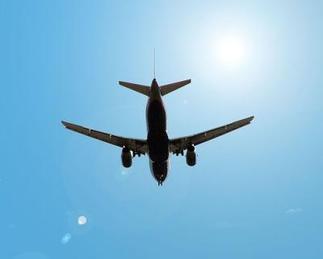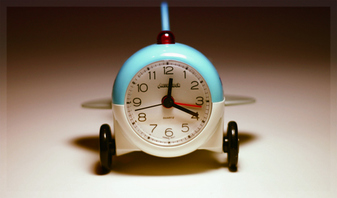The greater number of time zones crossed, the more severe jet lag becomes. Flight times and time of arrival may affect the severity as well. The severity of symptoms may be worse 2-3 days after arrival than on the day immediately following disembarkation. Although symptoms will gradually become less severe, they can still be acute at particular times of day. There will be a window of time during the day when the period of high arousal associated with the time zone just left overlaps with the arousal high point at the new local time. Since this window may be predicted in advance, utilize it for timing of training practices in the first few days at destination. The direction of travel also affects jet lag; it is easier to handle flying in a westward direction than east.
Methods To Reduce Symptoms of Jet lag
So what are some ways to reduce the effect of jet lag? One way is to have activity and social contact during the day after arrival (don’t just lounge around the hotel). Altering training times for a few days prior to travel to take into consideration the time of competition in another time zone is known to be beneficial. Research has shown that younger athletes, as well as athletes in good physical shape, tend to cope with jet lag more easily. However, just because an athlete experiences minimal jet lag for one trip doesn’t mean it will be that way for each trip, so plan accordingly.
Scheduling Travel
If it is possible to do so, flights should be scheduled so that tennis athletes arrive well in advance of competition. Even traveling eastward, allow one day for each time zone crossed, leaving a cushion of safety. The time for adaptation may be shortened by exploiting the external factors resetting biological clocks: rest/exercise, darkness/ light, meals and social influences. The key is to tune in straight away to the external influences of the new environment. Consider departure from regional airports or alternate carriers.
Before/During Travel
During lengthy flights it is next to impossible to completely eliminate jet lag, but with careful planning the symptoms can be reduced. A week prior to departure, advise the tennis athlete to adjust the wake up and night bed time, depending on the direction of the flight. A change of more than two hours may interrupt the engagements during the day. During the flight, plan a routine. For day time flights, stay awake and keep mentally active/engaged. For longer flights that entail traveling during the night, it is advisable to sleep on the plane. The timing of this should be decided in advance so that some meals on board can be missed. It is a good strategy to set your watch to local time at the next point of landing once on board the plane: in a single haul flight this would be the local time of the country of destination. The important thing is that the player mentally tunes in to the new local time straight away and adjusts behavior accordingly.
To compensate for the dry air on the plane, the tennis athlete should drink large amounts of liquid. Choose water or fruit juices, and limit alcohol and fizzy drinks. To combat the feeling of stiffness during long flights, tennis athletes can perform isometric exercises and varying range of motion exercises while in their seats, and also walk up and down the aisles every 30 minutes or so.
Upon Arrival
If the athlete traveled westward, he or she should go sleep early. However, early onset of sleep will be less likely after an eastward flight. In this case a light training session is very beneficial and can help adjust to the new time zone. Evidence also exists that exercise speeds up the adaptation to a new time zone. For the first few days in the new time zone, training sessions should not be all-out efforts. In the first few days of adaptation, avoid alcohol and avoid taking prolonged naps. Although sometimes challenging, it is highly preferable to adjust to the new time zone and try to stay awake until after dark and attempt to wake up at a relatively normal time. This adjustment although sometimes difficult (especially on long flights) can provide a major benefit to tennis athletes.
Source:
Reilly, T. (1998). Travel: Physiology, jet-lag, strategies. In: Encyclopedia of Sports Medicine and Science, T.D.Fahey (Editor). Internet Society for Sport Science: http://sportsci.org. 12 July 1998.






 RSS Feed
RSS Feed
